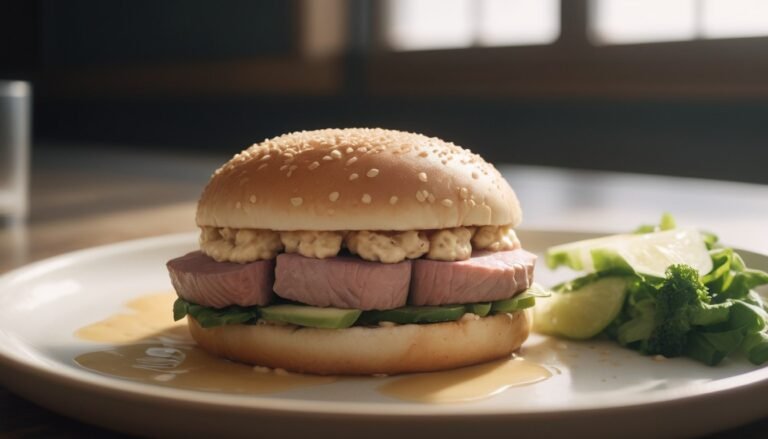Low-fat, high-protein diets may help in weight loss and muscle growth. For optimal outcomes and well-rounded nutrition, select a range of plant and animal sources, such as beans, egg whites, and fish with white flesh.

White-fleshed fish
Per 3.5 oz (100 g) plain, cooked dish, the majority of white-fleshed fish have less than 3 g of fat, 20–25 g of protein (Trusted Source), and 85–130 calories. This makes them great protein sources.
Fish like cod, haddock, grouper, halibut, tilapia, and bass are examples of extremely lean white fish.
Compared to fish with darker flesh, such coho and sockeye salmon, which have more fat and calorie content, these white fish typically only contain around 25% as much omega-3 fatty acids. Consequently, it’s wise to eat both kind of fish.
Plain Greek yogurt
Greek yogurt has approximately 9 g of protein in a 3.5-ounce (oz) (100 g) serving, but normal yogurt only has about 4 g of protein in a serving.
Choose nonfat Greek yogurt, which contains fewer than 2 grams of fat per 156-gram serving, or low fat plain Greek yogurt, which, depending on the brand, has roughly 10 g of proteinTrusted Source, if you’re searching for the lowest possible amount of calories and fat.
You can add your own fruit and avoid the needless sweets by choosing plain yogurt.
Find out more about Greek yogurt and conventional yogurt.
Beans, peas, and lentils
Legumes include a subtype known as pulses, which includes dry beans, peas, and lentils. Depending on the variety, they typically provide 20–25 g of protein every 1/2 cup (100 g) cooked dish.
A review for 2021According to Trusted Source, consuming beans can improve the body’s ability to control glucose, lower inflammation, lower cholesterol, and protect blood vessels, among other health markers.
Notably, the building blocks of protein in your body, necessary amino acids, are scarce in pulses. You can, however, make up for those deficiencies by consuming additional plant protein sources throughout the day, like nuts and whole grains.
Skinless white poultry meat
A 3.5 oz (100 g) portion of cooked chicken or turkey breast contains approximately 30 g of protein.
Opt for white meat cuts like breasts, breast tenderloins (tenders), and wings for the lowest fat content, avoiding dark meat cuts such as drumsticks and thighs.
To reduce calorie and fat intake, it is advisable to remove the skin from the meat. For instance, 3.5 oz (100 g) of roasted chicken breast with skin has 200 calories and 8 g of fat, whereas the same amount of skinless roasted chicken breast contains around 161 calories and 3.5 g of fat.
Whether you remove the skin before or after cooking, the fat reduction is essentially the same.
Low fat cottage cheese
A single serving of low fat cottage cheese weighing 226 grams contains 163 calories, 2.5 grams of fat, and 28 grams of protein. Additionally, consuming cottage cheese provides approximately 10-15% of the Recommended Daily Intake (RDI) for calcium in just half a cup, along with essential nutrients like potassium, phosphorous, magnesium, and zinc.
Tofu
Tofu is a highly suitable protein option, especially if you aim to exclude animal products from your diet. A 3 oz (85 g) serving of tofu contains 71 calories, 3.5 g of fat, and 9 g of proteinTrusted Source, providing ample amounts of all the essential amino acids.
In case you’re not completely convinced about tofu, there are two other whole-food sources of soy, namely edamame and tempeh, which are rich in protein and relatively low in calories and fat.
It’s worth noting that approximately 94%Trusted Source of soybeans grown in the United States are genetically modified (GM). However, if you prefer to avoid GM foods, you can opt for organic tofu, as organic foods are not genetically modified.
Lean beef
Choose lean cuts of beef that contain less than 10 g of total fat and no more than 4.5 g of saturated fat per 3.5 oz (100 g) cooked serving. For ground beef, it is recommended to select options that are at least 90% lean. A 4 oz (113 g) cooked hamburger patty made with 95% ground beef provides 155 calories, 5.6 g of total fat (including 2.4 g of saturated fat), and 24 g of protein. Additionally, lean beef is a rich source of various B vitamins, zinc, and selenium.
Powdered peanut butter
Unsweetened powdered peanut butter offers a lower-calorie alternative. With only 375 calories and 8 g of fat per serving, it still provides 33 g of protein.
Low fat milk
Low fat milk is a versatile option that can be consumed in various ways, whether it’s drinking it, using it for cooking, or adding it to cereal. A single cup of low fat milk with 1% milk fat contains 8 grams of protein, 2 grams of fat, and 105 calories. In contrast, a serving of whole milk with 3.25% milk fat provides the same amount of protein but has 146 calories and approximately 8 grams of fat.
Interestingly, recent research suggests that consuming whole milk may not pose an increased risk of heart disease, contrary to previous beliefs. In fact, it may even aid in weight management.
If you’re unsure about which type of dairy milk is most suitable for you, especially if you have high cholesterol or heart disease, it’s advisable to consult with a doctor or a registered dietitian for personalized guidance.
Pork loin
There are a few pork cuts that meet the criteria set by the U.S. Department of Agriculture to be considered “lean.” These cuts contain less than 10 g of fat and no more than 4.5 g of saturated fat per 3.5 oz (100 g) cooked serving.
Some examples of lean pork cuts include pork tenderloin, pork (loin) chops, and pork top loin or sirloin roasts. Among these, pork tenderloin is the leanest cut, providing 109 calories, 21 g of protein, and approximately 2.7 g of fat per 3.5 oz (100 g) cooked serving.
Similar to lean beef, lean pork is also a great source of various B vitamins and selenium, and it is a good source of zinc as well. To learn more about incorporating pork into your diet, you can find additional information on eating pork.


















+ There are no comments
Add yours